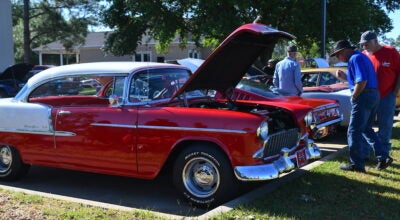Department of Transportation, GSP weigh in on Hwy. 27 traffic light
Published 7:54 pm Tuesday, February 7, 2017
Following two fatal accidents at the intersection of Hwy. 27 North and Bethel Road in a five-day period, public outcry has drastically increased calling for a traffic light to be installed at the intersection. Currently there is a caution light that flashes yellow as yield sign on Hwy. 27. For traffic turning off of Bethel Road, there is a stop sign and flashing red light.
In both fatal accidents that have occurred in the past week, the driver that was killed was turning off of Bethel Road onto Hwy. 27 and T-boned.
“Right now you have two fatal crashes that occurred five days apart,” Georgia State Patrol trooper Walt Landrum said. “Both of them were the same contributing factor – failure to yield after stopping at a stop sign. They have to stop and make sure nothing is coming.”
Landrum said that the area is not congested and in his opinion many of the wrecks that occur at the intersection could be avoided if the drivers turning off of Bethel Road were more cautious.
“You have to pay attention to what you’re doing,” Landrum said. “Stop for the proper signals that are in place for you whether it is a yield sign or a stop sign.”
He added that if drivers would just wait an extra five seconds and make sure the roadway was clear that it would cut down on accidents and fatalities.
Since Jan. 1, 2016, Georgia State Patrol has responded to eight traffic accidents within a half-mile of the intersection in question, including the two in the past week according, to GSP Colquitt Post Commander Jeremy Roberts. Of those eight, there were two fatalities and four that involved non-life threatening injuries. Bainbridge Public Safety has responded to three additional accidents at the intersection in the same period, bringing the total to 11 in the last 13 months. According to a BPS spokesperson, only minor accidents at the intersection are handled by BPS because Hwy. 27 is a state road.
The Georgia Department of Transportation has initiated a traffic study on the intersection in response to the two fatal wrecks. The study will determine what type of action needs to be made including the possibility of adding a traffic light.
“Basically we go out to the site and do a study,” Chad Hartley, a district traffic engineer with DOT said. “We take the accident reports to see what the causes of the wrecks are. We take the time of day and we do an on-site analysis. Then we do traffic counts. Then it has to meet certain federal guidelines called traffic warrants for a signal to be put up.”
Engineers are planning to go to the site at 7 a.m. and 4 p.m., the times of the two wrecks, so that they can attempt to recreate the conditions that the wrecks occurred under.
After data is collected, including the accident’s causes and traffic volume, the information will be compared to federal guidelines for when a light can be installed at an intersection.
There are nine possible criteria and at least one must be met for a light to be installed. The first criteria looks at the volume of traffic on the main road and the side roads during an eight-hour period on a single day.
The second looks at traffic volume during a four-hour period and the third looks exclusively at peak hours.
Additional criteria will look at the number of crashes that have occurred at an intersection in the past 12 months.
“If you have a certain number of crashes in a 12-month period, it allows you to go back to your eight-hour warrant and lower the volumes that are required,” Engineer Van Mason said. “It is five crashes correctable by the installation of a signal. If someone hits a deer, the signal isn’t going to help because the deer isn’t paying attention to the signal. A sideswipe in the same direction, someone getting rear-ended; those are not correctable by a signal.”
Based on the initial reports of the two fatal accidents in the last week, both would qualify as correctable accidents. DOT will also look at options other than putting in a traffic light to rectify the issue.
“A traffic signal is a last resort method that you use because it is the most disruptive system we have, because it stops traffic,” Mason said. “You have to try alternative methods before you install a signal.”
Hartley added, “For this, although we like to try alternative methods, if it meets the warrants we will certainly put a signal up. We do plan on, after we get the studies done, looking at it with State Patrol and taking some actions out there.”






